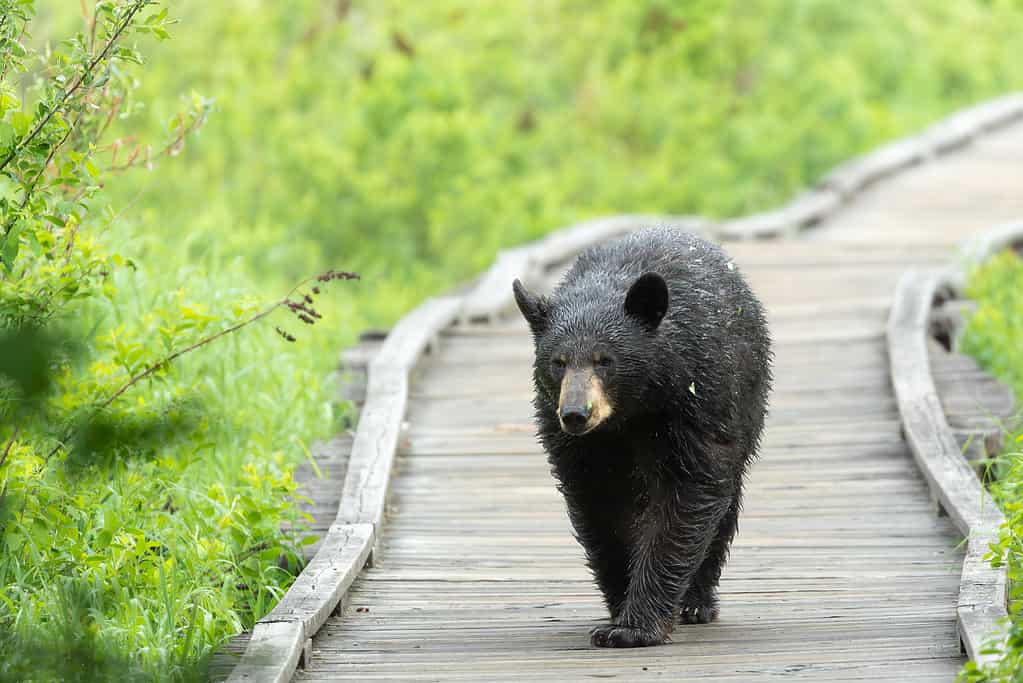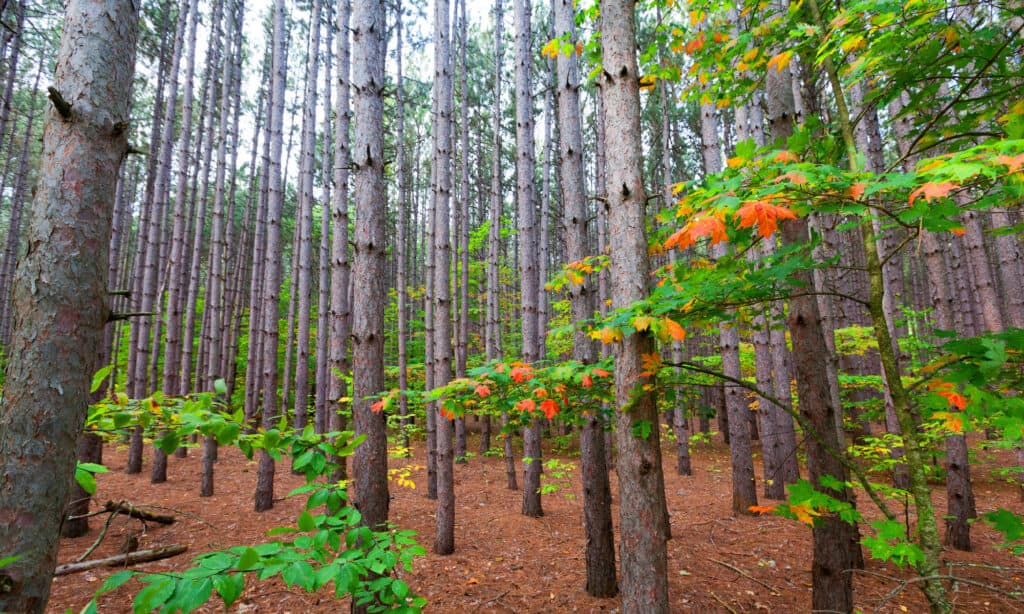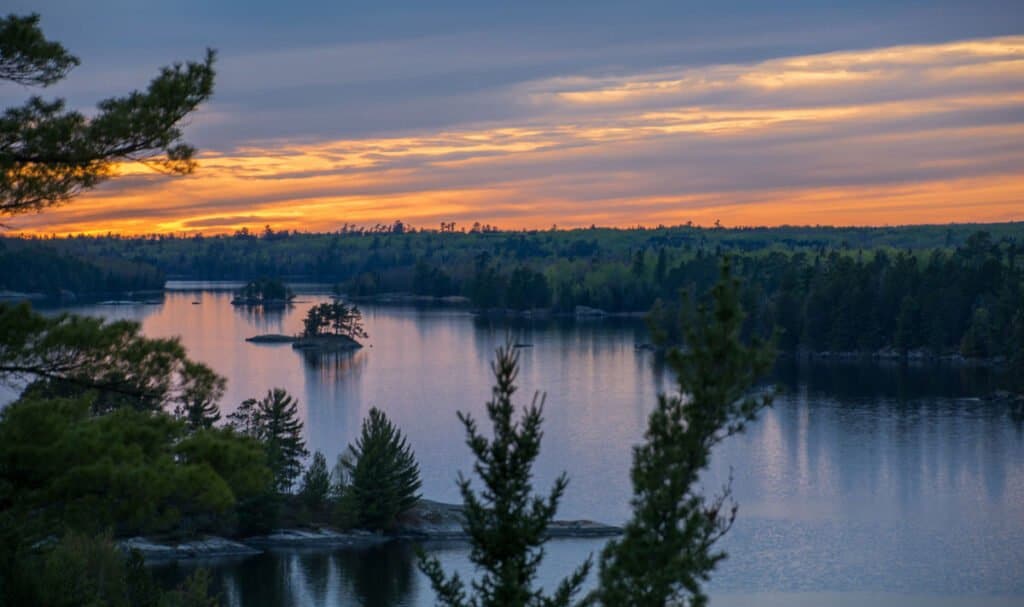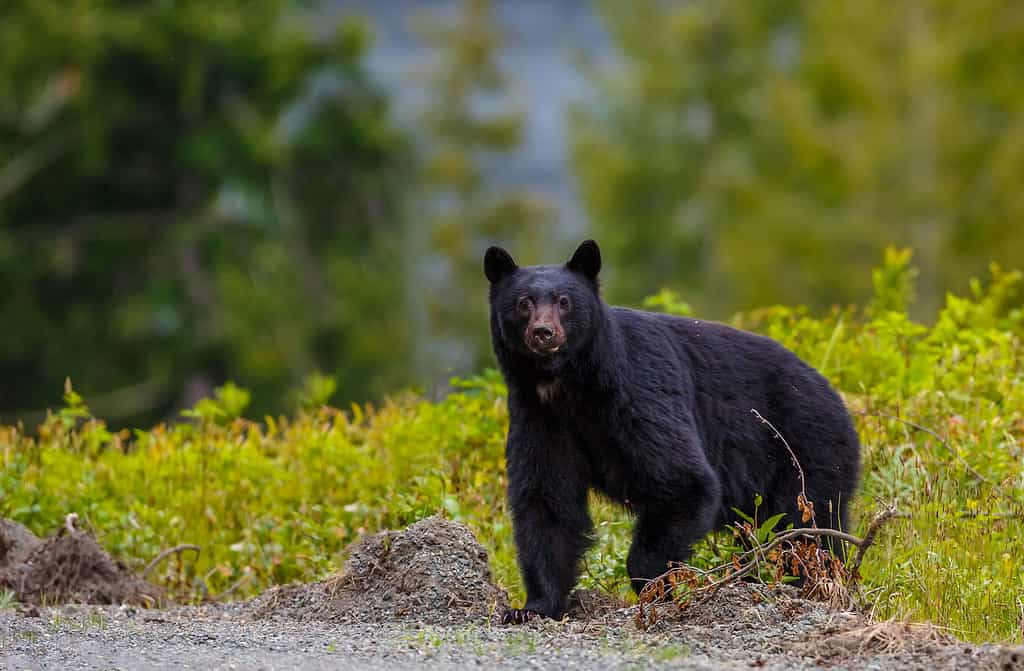Black bears live throughout Minnesota. Most reside in the north, but recently, their range has increased into more central regions and even urban areas. Hikers and outdoor enthusiasts here have always dealt with bears on trails and campsites, but where exactly are the most bear-infested places in Minnesota this winter? Let’s discover the seven places you will most likely encounter a black bear.

Around 24,000 black bears live in Minnesota.
©Greg Norgaard /iStock / Getty Images Plus via Getty Images
How Many Bears Are There In Minnesota?
Minnesota is a black bear country. This iconic species chiefly resides in the northern forests, but anywhere quiet in Minnesota with bear-specific food and shelter can home bears. These epic animals are attracted to swamps and dense forests, but they’ll also break cover to eat crops and raid bins or campsites.
Experts think around 24,000 black bears inhabit the northern state regions. However, black bears are moving into central and southern Minnesota’s agricultural lands, too. The Department for Natural Resources (DNR) asks anyone who spots a black bear to report it.
1. Chippewa National Forest

The Chippewa National Forest in north-central Minnesota is a bear hotspot.
©iStock.com/csterken
So many black bears inhabit Minnesota’s north central Chippewa Forest that the DNR has monitored them since the 1980s. It’s a core black bear range with superb bear habitat.
Chippewa National Forest is 1.6 million acres in size, and the DNR manages 660,000 of them. The rest belong to tribes, the state, and private owners.
This forest contains a lot of water, the most out of all Minnesota’s national forests, which is essential for all wildlife, including black bears. 1,300 lakes and nearly 1,000 streams provide habitats, food, and drink.
Although a lot of bears live here, they’re only occasionally spotted on trails and near campsites. Attacks are extremely rare, but the Rocky Boy reservation has reported a recent increase in black bear sightings.
2. Superior National Forest
Three million acres of Superior National Forest are situated in northeastern Minnesota. Lake Superior, Canada, and Voyageurs National Park form its borders. Of its three million acres, 445,000 are lakes and streams. The rest is an epic mix of pine and spruce trees, rocky landscapes, the state’s highest point, Eagle Mountain, the Misquah HIlls, and acres of boreal forest.
Incredible wildlife, including gray wolves, moose, deer, and black bears, inhabits Superior National Forest. Food and trash are the main reported reasons for human and bear interactions here, especially around La Croix/Cook’s Agnes Lake areas and north of Gunflint Trail.
3. Voyageurs National Park

Voyageurs National Park’s forested areas are home to many black bears.
©iStock.com/Kyle Kempf
218,055-acre Voyageurs National Park is a black bear hot spot. Rocky outcrops, forests, lakes, streams, and wetlands fill this wild outdoor space. It’s described as a place of transition between land and aquatic landscapes.
Bear encounters occur here on trails and near campsites. In 2019, just north of the park, a black bear fatality occurred. Fatal encounters with bears aren’t common, but they’re timely reminders that wild bears should not be messed with.
4. Polk County
Polk County recently produced the biggest bear ever caught in Minnesota. In September 2022, Ben Genereux hunted and shot a black bear whose skull measured 21 9/16 inches. This is Minnesota’s record for muzzleloader harvest.
Polk County is located in northwestern Minnesota. It’s best known for Maple Lake, which is surrounded by a large sugar maple forest, and its perfect black bear habitat.
5. Grand Portage State Forest
Grand Portage State Forest is northeast of Grand Marais in northeastern Minnesota. It borders Superior National Forest and encompasses epic black bear territory such as swamps, forests, and rivers in the Grand Portage Indian Reservation.
One of the most memorable black bear encounters near here was Kim Heil-Smith’s run-in with a bear on her driveway.
6. Boundary Waters Canoe Area Wilderness (BWCAW)
Situated in the heart of Superior National Forest, BWCAW is one of Minnesota’s most bear-heavy spots, and it is also home to the largest population of American gray wolves.
BWCAW is a 1,090,000-acre spread of forests, lakes, and streams and a popular spot for campers, kayakers, and anglers. Some of the most trodden trails include the Pow Wow Trail, Border-Route Trail, Snowbank Trail, and the Sioux-Hustler Trail. There’s potential to encounter black bears along all these trails.
According to the DNR, bear hotspots in BWCAW include Clearwater, Rose, Duncan, Alder, Moon, and Caribou Lakes.
7. Pillsbury State Forest

Black bears roam Pillsbury State Forest’s wooded areas, lakes, streams, and swamps.
©Mark Caunt/Shutterstock.com
Pillsbury State Forest is named for the former Minnesota governor, John Pillsbury, who left 1,000 acres of land to the state. It’s located in Cass County in central Minnesota.
The forest is full of dense woods, rocky areas, and water bodies that make such great wildlife habitats. Alongside black bears, wild turkeys, white-tailed deer, bald eagles, and gray wolves roam. It’s also popular with people who enjoy hiking and kayaking, and this has led to a few encounters with black bears, such as one that sashed a woman after it was startled by her dog.
Minnesota DNR Bear Advice
Because Minnesota is a prime bear country, the state has issued guidance on living with them. The basics include:
- Never feed bears because it teaches them to approach humans
- Stay in a group, and keep children close.
- Keep dogs on a leash – state park rules in Minnesota require a leash at all times
- Make periodic noise so bears can avoid an encounter
- Double bag food and clean caught fish away from camp
- Don’t keep food, trash, or clothes worn whilst cooking in your tent
- Use bear-proof trash containers when you spot them
- Set up camps away from dense forest lines and natural food sources.
If you see a bear or one approaches you in Minnesota, here’s what the DNR suggests:
- Do not approach it, stand still, then walk away
- Never run away, or it may provoke a hunting response
- Hold your ground. Wave your arms and shout, “Hey bear,” or bang pot and pans together
- Use bear spray if the bear does not stop approaching
- Do NOT play dead – always fight back if attacked
Bear Hunting In Minnesota

Black bear hunt permits are lottery-based. The season begins on September 1st.
©Menno Schaefer/Shutterstock.com
The majority of Minnesota’s state land is open to bear hunting with a permit and license. Poachers risk hefty fines and prison sentences without them because the DNR strictly manages its bear population.
A lottery occurs in April, with permits given in June, for one bear per hunter in an allocated area. The hunting season runs from September 1 to October 15, and hunters are requested not to shoot tagged bears, which are part of ongoing studies.
Thank you for reading! Have some feedback for us? Contact the AZ Animals editorial team.








